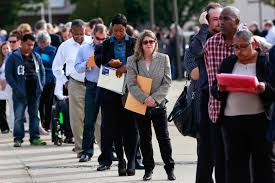The job market in America has always been a topic of intense discussion, but recent trends have reignited debates about unemployment, economic shifts, and workforce challenges. As of late 2024, the issue of joblessness continues to be a pressing concern, influenced by a range of economic, technological, and social factors.https://joblessfix.com/
The Current Unemployment Landscape
Recent data indicates that the national unemployment rate has experienced fluctuations throughout the year, with pockets of the workforce being disproportionately affected. For instance, while the headline unemployment rate hovers around 3.7% (as of the latest Bureau of Labor Statistics report), there are underlying disparities when broken down by demographics, regions, and industries. Youth unemployment and underemployment remain significant concerns, as many young graduates struggle to find positions that match their qualifications.
Key Reasons Behind Joblessness in America
Several factors contribute to the current state of joblessness in the United States:
- Economic Shifts and Globalization:
- The rise of global supply chains has led to the outsourcing of many manufacturing and administrative jobs to countries with lower labor costs. This has particularly impacted the Midwest, historically reliant on industries such as steel and automotive manufacturing.
- Technological Advancements:
- Automation and artificial intelligence (AI) continue to disrupt traditional job markets. Industries like retail, transportation, and manufacturing are adopting technology to streamline operations, reducing the need for human labor. For example, self-checkout systems and autonomous delivery vehicles are becoming more common.
- Post-Pandemic Changes:
- The COVID-19 pandemic reshaped the employment landscape, accelerating remote work, shifting consumer behaviors, and forcing businesses to adapt. While some sectors rebounded, others, like hospitality and small businesses, continue to recover.
- Mismatch of Skills:
- Many job seekers find themselves ill-equipped for roles in a rapidly changing economy. While there is significant demand in sectors like tech and healthcare, workers from traditional industries may lack the necessary training to transition.
- Economic Uncertainty:
- With ongoing concerns about inflation, interest rate hikes, and a potential recession, many businesses are hesitant to expand their workforce. This cautious approach has led to reduced hiring in certain sectors.
Latest News and Updates
- Layoffs in the Tech Sector: The tech industry, often seen as a beacon of growth, has faced significant layoffs in 2024. Companies like Meta, Amazon, and smaller startups have announced workforce reductions, citing overexpansion during the pandemic years and a shift in market conditions.
- Government Initiatives: In response to rising concerns about joblessness, the federal government has rolled out programs aimed at retraining workers. The “Future Skills Initiative” is one such program designed to help workers transition into high-demand fields like renewable energy and technology.
- State-Level Trends: States like California and Texas have reported contrasting job trends. While California grapples with tech layoffs, Texas has seen growth in energy and infrastructure jobs, albeit with challenges in housing affordability for workers relocating there.
Potential Solutions to Address Joblessness
Tackling unemployment in America requires a multi-faceted approach. Here are some potential strategies:
- Investing in Education and Training:
- Expanding access to vocational training, apprenticeships, and continuing education can help workers acquire skills for in-demand industries.
- Strengthening Social Safety Nets:
- Unemployment benefits, housing assistance, and healthcare support can provide a safety net for individuals while they search for new opportunities.
- Encouraging Innovation and Entrepreneurship:
- Policies that support small businesses and startups can create new jobs and foster economic growth.
- Regional Development Programs:
- Targeting investments in struggling regions, particularly rural and post-industrial areas, can help revitalize local economies.
- Embracing Remote Work:
- Encouraging remote work can broaden opportunities for individuals in areas with fewer local job prospects.
Conclusion
The issue of joblessness in America is complex, influenced by technological changes, economic policies, and global trends. While the overall unemployment rate may appear stable, deeper analysis reveals disparities that require targeted interventions. Addressing these challenges will demand collaboration between policymakers, businesses, and educational institutions to ensure that the American workforce remains resilient and competitive in an ever-changing global economy. By investing in people and fostering innovation, America can tackle joblessness head-on and pave the way for a brighter economic future.

